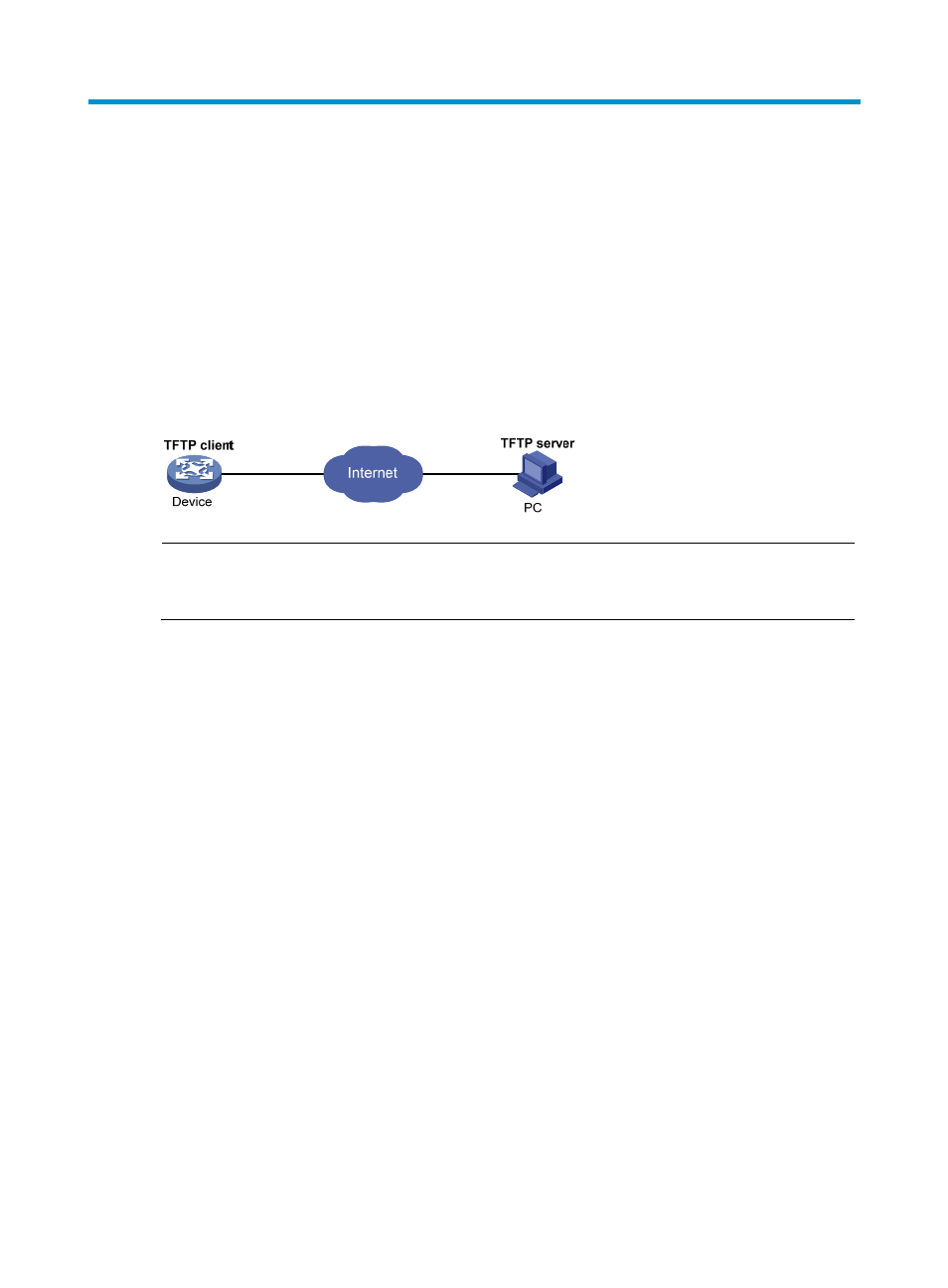Configuring tftp, Prerequisites, Using the device as a tftp client – H3C Technologies H3C S12500 Series Switches User Manual
Page 93

81
Configuring TFTP
Trivial File Transfer Protocol (TFTP) is a simplified version of FTP for file transfer over secure reliable
networks. It uses UDP port 69 for data transmission. In contrast to TCP-based FTP, TFTP requires no
authentication or complex message exchanges, and is easier to deploy.
TFTP supports the following transfer modes:
•
Binary mode—Used to transfer image files, such as.bin, and .btm files.
•
ASCII mode—Used to transfer text files, such as .txt, .bat, and .cfg files.
The switch can operate only as a TFTP client (see
) to upload or download files.
Figure 31 TFTP application scenario
NOTE:
If you enable FIPS mode and reboot the switch, the TFTP function is disabled. For more information about
FIPS mode, see
Security Configuration Guide.
Prerequisites
Run a TFTP server program on the file host and set a TFTP working directory.
Configure IP addresses and routes to make sure that the device and the TFTP server can reach each other.
Using the device as a TFTP client
The device provides the following modes for downloading a new file from a TFTP server:
•
Normal download—The new file is written directly to Flash and overwrites the old file that has the
same name as it. If file download is interrupted, both old and new files are lost.
•
Secure download—The new file is downloaded to memory and will not be written to Flash until the
whole file is obtained. A download failure does not affect the old file that has the same name as the
old file.
To avoid undesired file loss, use the secure download mode. If you use the normal download mode
because of insufficient memory, assign the new file a file name unique in Flash.
You can use the tftp client source command to specify a source IP address or source interface for the
TFTP packets sent by the device. If a source interface (typically, a loopback or dialer interface) is
specified, its primary IP address is used as the source IP address for the TFTP packets. The source
interface and source IP address settings overwrite each other.
The tftp client source command setting applies to all TFTP sessions. When you set up a TFTP session with
the tftp command, you can also specify a different source IP address for the TFTP session.
- H3C S12500-X Series Switches H3C S9800 Series Switches H3C S9500E Series Switches H3C S5560 Series Switches H3C S5130 Series Switches H3C S5120 Series Switches H3C SR8800 H3C SR6600-X H3C SR6600 H3C MSR 5600 H3C MSR 50 H3C MSR 3600 H3C MSR 30 H3C MSR 2600 H3C MSR 20-2X[40] H3C MSR 20-1X H3C MSR 930 H3C MSR 900 H3C WX3000E Series Wireless Switches H3C WX5500E Series Access Controllers H3C WX3500E Series Access Controllers H3C WX2500E Series Access Controllers H3C WX6000 Series Access Controllers H3C WX5000 Series Access Controllers H3C WX3000 Series Unified Switches H3C LSWM1WCM10 Access Controller Module H3C LSUM3WCMD0 Access Controller Module H3C LSUM1WCME0 Access Controller Module H3C LSWM1WCM20 Access Controller Module H3C LSQM1WCMB0 Access Controller Module H3C LSRM1WCM2A1 Access Controller Module H3C LSBM1WCM2A0 Access Controller Module H3C WA3600 Series Access Points H3C WA2600 Series WLAN Access Points H3C SecPath F5020 H3C SecPath F5040 H3C VMSG VFW1000 H3C S10500 Series Switches
